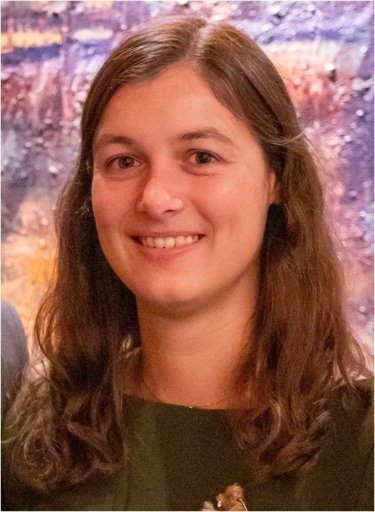Living on the edge: Realization of the quantum spin Hall effect
Carolien Castenmiller is a PhD student in the department Physics of Interfaces and Nanomaterials. (Co-)Supervisors are prof.dr.ir. H.J.W. Zandvliet and dr.ir. P. Bampoulis from the faculty of Science & Technology.
 The need to reduce energy consumption is now recognized worldwide. As a result, researchers have shown an increased interest in topological insulators, because of their potential use in dissipationless electronics. Particularly the quantum spin Hall (QSH) effect has been in the spotlights. This is a quantum state of matter characterized by two topologically protected, spin-polarized metallic states at the edges of a two-dimensional topological insulator.
The need to reduce energy consumption is now recognized worldwide. As a result, researchers have shown an increased interest in topological insulators, because of their potential use in dissipationless electronics. Particularly the quantum spin Hall (QSH) effect has been in the spotlights. This is a quantum state of matter characterized by two topologically protected, spin-polarized metallic states at the edges of a two-dimensional topological insulator.
This research focuses on two theoretically predicted quantum spin Hall insulators, namely, germanene and thin film (Bi0.4Sb0.6)2Te3 (BST). The electronic structure of both materials is thoroughly investigated using scanning tunneling spectroscopy.
We show that thin film BST displays well-defined topological surface states, surface states caused by the outermost Te atomic layer and quantized bulk energy levels. All together, the states give rise to prominent oscillations in the local density of states. Furthermore, scanning tunneling spectroscopy experiments confirm that the Dirac point is located in close proximity to the bulk valence band, making it difficult to observe signatures of the QSH state.
For germanene, we determine a workfunction of 3.8 eV by measuring the image potential states. This is much lower that the workfunction of a regular scanning tunneling microscopy tip, and therefore results in a substantial electric field in the tunnel barrier. Due to the buckled honeycomb structure of germanene, this leads to broken inversion symmetry and charge will shift from one sublattice to the other. With scanning tunneling spectroscopy experiments we show that the size of the gap depends linearly on the application of a perpendicular electric field and that this results in a topological phase transition. Moreover, we show that the robust, topological edge states disappear for a sufficiently high electric field.
All together, we have found no indications for the QSH effect in thin film BST. In contrast, we have found compelling evidence for the presence of the QSH effect in germanene on Ge2Pt. Future research could focus on utilizing the topologically protected edge transport for high-performance devices with low energy consumption.

